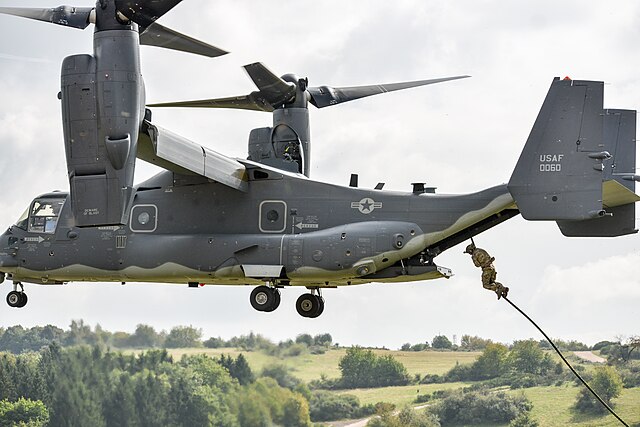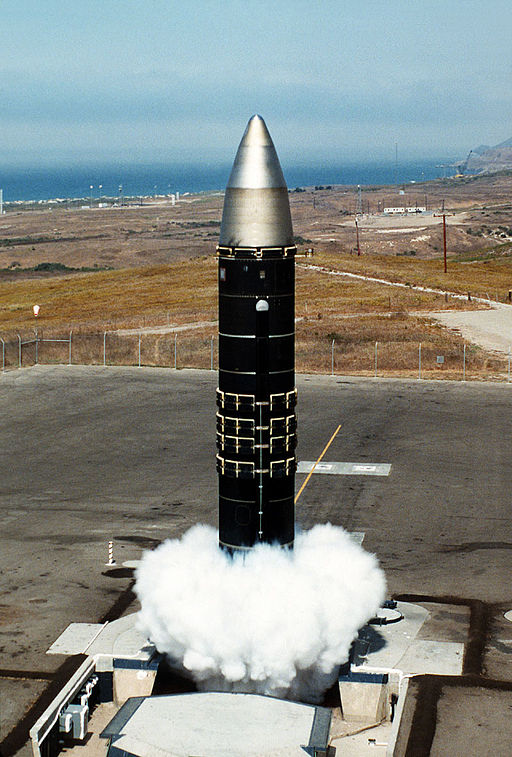In the landscape of military aviation, a few machines capture the confluence of technology and versatility as vividly as the V-22 Osprey. This tiltrotor aircraft, the brainchild of Bell Helicopter and Boeing Rotorcraft Systems, has been a game-changer, revolutionizing the U.S. military’s operational dynamics with its unique blend of speed, agility, and lifting capabilities. In this comprehensive article, we delve deeper into the technical marvel that is the Osprey, unraveling its performance specifications and recounting valiant tales from the battlefield where it has proven its mettle.
Technical Brilliance: A Closer Look
Hybrid Aerodynamic Design
Standing as a testimony to innovation, the Osprey boasts a remarkable airframe that facilitates both helicopter and airplane modes of flight. This hybrid design centers around two large three-bladed proprotors, each spanning 11.6 meters, which are capable of tilting 90 degrees to facilitate vertical takeoffs and landings as well as horizontal flight. This transformative ability is further complemented by a composite wing structure, enabling optimal lift and aerodynamic efficiency.
Engine Specifications and Power Dynamics
The heartbeat of the Osprey is its two Rolls-Royce Allison AE1107C engines. These power plants churn out a staggering 6,150 shaft horsepower each, propelling the aircraft to speeds that were previously unattainable for a machine with VTOL capabilities. The sheer power output facilitates a cruising speed of 277 knots and allows the Osprey to achieve a sprinting pace of 305 knots, combining rapid transit with exceptional maneuverability.
Performance Metrics
- Operational Range: The Osprey stands out with its extended operational range of 1,011 nautical miles, a parameter that grants the U.S. military the ability to execute long-range missions without the need for frequent refueling.
- Service Ceiling: A noteworthy feature is its ability to soar to altitudes of 25,000 feet, providing a strategic advantage in high-altitude operations and enhancing safety by evading ground-based threats.
- Load Capacity: In terms of payload, the Osprey is a heavy lifter, capable of transporting up to 24 troops or hauling an internal load of 20,000 pounds and an external load of 15,000 pounds, thus making it a versatile asset in logistics and troop transport.
Osprey in Action: Tales from the Battlefield
Operation United Assistance
During the Ebola outbreak in West Africa, the Osprey showcased its humanitarian potential in Operation United Assistance in 2014. Its speed and range facilitated the rapid transport of personnel and supplies to remote areas, contributing significantly to the relief efforts.
Rescue in Afghanistan
In a daring high-altitude rescue mission in 2010 in the rugged terrains of Afghanistan, the Osprey’s high-altitude capabilities were put to the test. U.S. Marines utilized the aircraft’s exceptional VTOL abilities to execute a seamless extraction, showcasing its invaluable utility in hot zones.
Combat Operations in Iraq
The Osprey has also proved its combat mettle during various operations in Iraq. Its ability to quickly transition from hovering to forward flight allowed for rapid and safe troop insertions and extractions in hostile territories, saving countless lives and ensuring mission success.
An Unprecedented Asset for the U.S. Military
Versatility on the Frontline
The Osprey stands as a multipurpose powerhouse, offering unparalleled versatility in operations ranging from casualty evacuation to tactical recoveries. Its unique flight characteristics make it an asset in rapid deployments, reshaping the dynamics of aerial warfare.
Safety and Survivability
One of the Osprey’s standout features is its enhanced safety profile. Its capacity to operate at higher altitudes compared to traditional helicopters, coupled with its speed, make it a formidable asset, capable of evading most ground-based threats.
Global Responsiveness
With its extended operational range and in-flight refueling capabilities, the Osprey grants the U.S. military a global reach, enhancing their strategic mobility and readiness on a global scale. This asset has become indispensable in modern dynamic warfare scenarios, facilitating rapid response and logistics support.
Conclusion: A Paradigm Shift in Military Aviation
The V-22 Osprey is more than just an aircraft; it represents a paradigm shift in military aviation. Its innovative design and exceptional performance specifications have carved a niche role for it in the U.S. military, transforming not just aerial capabilities but also the very nature of modern warfare.
As we venture further into the intricacies of this technical marvel, it becomes increasingly evident that the Osprey is not just an engineering milestone but a symbol of valor and innovation, holding a distinctive place in the annals of military history. Its stories from the battlefield resonate with tales of heroism and innovation, offering a glimpse into a future where technology and bravery forge the frontlines of defense.



